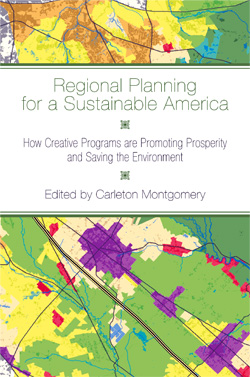 Tax-base sharing is one way to ease disparities across local areas in tax rates and tax bases while at the same time reducing incentives for local areas to compete for tax base.
Tax-base sharing is one way to ease disparities across local areas in tax rates and tax bases while at the same time reducing incentives for local areas to compete for tax base.
The most prominent example is the Twin Cities Fiscal Disparities program, which places 40 percent of the growth in commercial-industrial tax base in each municipality in each year into a seven-county, regional pool and then distributes the tax base back to participating municipalities and school districts based on tax base and population. The re-distributed tax-base is then taxed by each location at its own tax rate.
The program’s design means that it is a very effective way to:
- Reduce incentives for inefficient competition for tax base—by reducing the tax base “reward”
- Encourage joint economic development efforts, enhancing long-run regional growth—by allowing all places to share in tax-base growth in only one area
- Complement regional land-use planning efforts—by spreading the tax benefits of regional planning decisions across the whole region
- Provide insurance against future changes in growth patterns—few parts of a region can count on being a regional growth leader forever
- Reduce inequalities in tax rates and services—by giving larger shares of the pool to lower tax-base places
The Twin Cities Fiscal Disparities Program covers the seven core Minnesota counties in the Twin Cities Metropolitan Area. It benefits most of the region’s residents. In 2011, 64% of households in the region lived in areas that received more from the pool than they contributed. In 2011, 37% of regional commercial-industrial tax base and 11% of total tax base was in the pool. In St. Paul, one of the largest beneficiaries, the average homestead tax is roughly 9% lower than it would be without Fiscal Disparities. Minneapolis has had periods where it contributes and others when it benefits. The program reduces overall property tax base inequality in the region by about 20 percent (as measured by the Gini coefficient). It reduces the ratio of the highest to lowest tax base per household from 25 to 8 and it reduces the ratio of the second highest to second lowest tax base per household from 10 to 4.
New Jersey also has a well-established tax-base sharing program. Since 1970 the New Jersey Meadowlands Commission has overseen a program that collects 40 percent of the growth in property-tax revenues in portions of 14 Bergen and Hudson County communities. Revenues are redistributed annually based on the share of the Meadowland district that falls in each community. Because all participating communities share in revenue generated by development no matter where it takes place, the commission, which oversees land-use planning in the district, is able to plan for both conservation and development where they are most appropriate. For more, go to the Meadowlands page on this web site.
Agencies and Organizations:
Institute on Race and Poverty, University of Minnesota
Resources:
Minnesota Fiscal Disparities statute (officially known as the Charles R. Weaver Metropolitan Revenue Distribution Act)
Fiscal Disparities in the Twin Cities (pdf) a presentation by the Twin Cities Metropolitan Council
Minnesota’s Fiscal Disparities Programs (pdf) a 2005 report by Steve Hinze and Karen Baker of the Research Department of the Minnesota House of Representatives on the Twin Cities Fiscal Disparities and Duluth Minnesota Tax-base Sharing Programs
NJ Meadowlands Tax Sharing Program
Simulated Changes in Property Tax Base in the Bluegrass Region, 1994–2004
Simulated Changes in Payroll Tax Base in the Bluegrass Region, 2004
Simulated Changes in Property Tax Base in Minneapolis-Saint Paul Region, 1994-2004
Simulated Changes in Property Tax Base in Southern New Jersey, 1993–2003
Ameregis, Bluegrass Metropatterns: An Agenda for Economic and Community Progress in Central Kentucky
Selected References:
Daniel, C. 2003. The Twin Cities Metropolitan Council: Novel Initiative, Futile Effort. William Mitchell Law Review. 27:1941.
Hinze, Steve and Karen Baker, “Minnesota’s Fiscal Disparities Programs,” Minnesota House of Representatives Research, January 2005.
Luce, Thomas F., Jr. “Applying the Twin Cities Model of Tax-base Sharing in other Metropolitan Areas: Simulations for Chicago, Philadelphia, Portland, and Seattle,” National Tax Association 1997 Annual Conference Proceedings, National Tax Association, 1998.
Luce, Thomas, “Regional Tax Base Sharing: the Twin Cities Experience”, in Local Government Tax and Land Use Policies in the United States: Understanding the Links, Helen Ladd, Lincoln Institute of Land Policy, 1998.
Orfield, Myron, American Metropolitics: The New Suburban Reality, Brookings Institution, 2002, Chapter 3.
Orfield, Myron, Model Tax Sharing Legislation Statute, in American Planning Association Growing Smart Legislative Guidebook: Model Statutes for Planning and the Management of Change, American Planning Association, 1996.
Orfield, Myron and Thomas Luce, Region: Planning the Future of the Twin Cities, University of Minnesota Press, 2010, Chapter 1.
